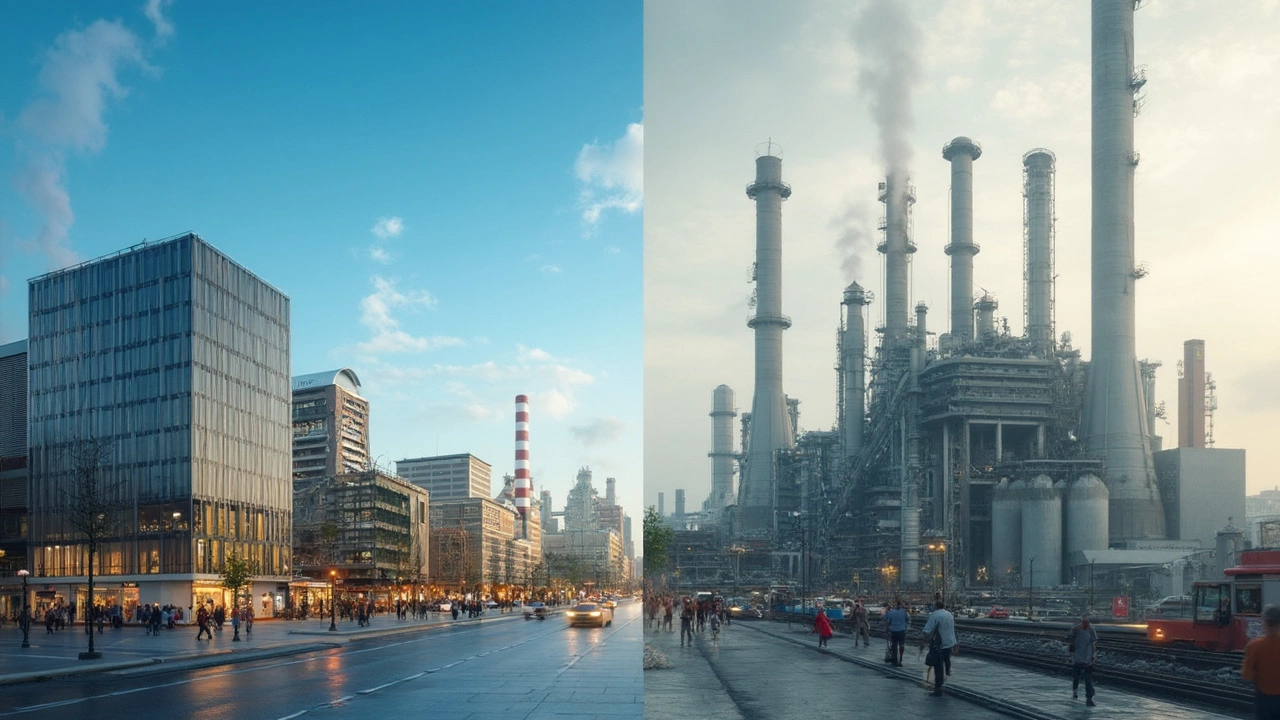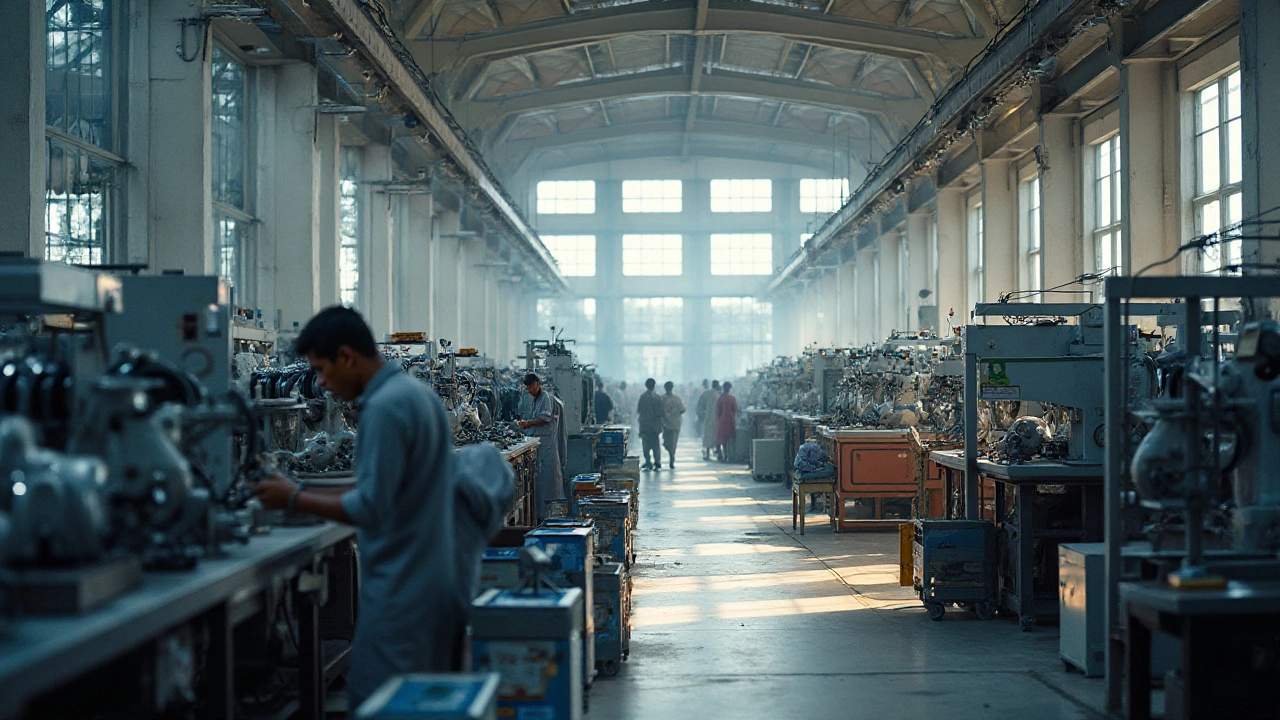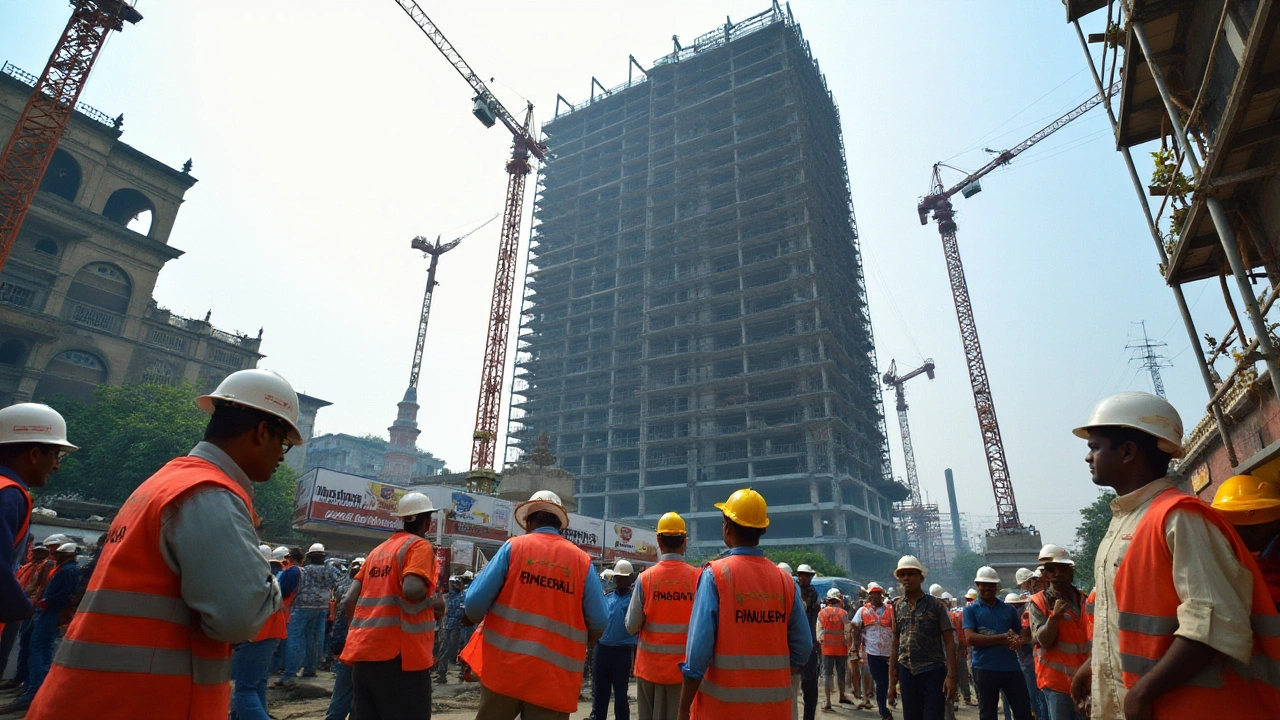Differences Between Commercial and Industrial Construction: What's What?

So, you're curious about what sets commercial construction apart from industrial construction? You're not alone! Many folks mix these up or just lump them together, but they couldn't be more distinct in their purposes and processes.
Let's break it down: commercial construction is all about spaces where business happens. We're talking shopping malls, office buildings, hotels, you name it. These are places where you spend your weekends or weekdays getting stuff done, shopping, or enjoying a nice meal.
Industrial construction, on the other hand, is a different beast. Think factories, power plants, and warehouses where goods get made, and heck, our electricity or water might be processed. They're built for heavy-duty work, with a focus on functionality and efficiency over appearance.
Diving deeper into each, you'll find that the materials and designs used can be worlds apart. Understanding these differences can really help if you're kicking off your own building project or just want to sound super smart at the next dinner party.
- Understanding Commercial Construction
- The Ins and Outs of Industrial Construction
- Key Differences in Materials and Design
- Navigating Regulations and Permits
- Tips for Choosing the Right Contractor
Understanding Commercial Construction
Alright, commercial construction is where the action is for most of us. It's about crafting spaces where we live our urban lives—shopping, dining, working, and even catching a movie. These projects can range from small local retail shops to gigantic skyscrapers.
The main goal here is to create spaces that are both functional and inviting. Think about it: next time you're in a coffee shop or a mall, notice how the environment aims to make you feel welcome while ensuring the place runs like clockwork.
When getting into commercial projects, strong understanding of design is key. Architects often focus on creating a sleek, attractive space that fits the brand's image. But it's not just about looks; everything has to comply with local zoning laws and regulations. Missing a permit? Your project is in trouble!
Materials in commercial construction need to be sturdy but stylish. There's a balance between aesthetics and longevity. A shopping mall, for instance, needs floors that look good while standing up to heavy foot traffic day in and day out.
Here’s a fun fact: according to recent data, the commercial property sector is booming, expected to grow by about 3.5% annually. This means tons of opportunities but also lots of competition for space and resources.
- A key consideration is location. A prime spot can make or break a business.
- Sustainability is now a big deal. Energy-efficient buildings are not just trendy but required by many jurisdictions.
- Choosing the right contractor can save a lot of headaches. A good one understands the ins and outs of both style and structure.
The Ins and Outs of Industrial Construction
When we talk about industrial construction, there’s a hefty focus on functionality. These projects are all about creating buildings that support industrial processes. Think assembly lines, production plants, or logistics hubs. Because of the specific needs, these constructions are often quite distinct from your usual high street shops or office blocks.
One of the first things to know is that industrial places are built to withstand a lot. We're talking about big machinery, heavy loads, and sometimes even harsh chemicals. As a result, construction materials and engineering have to be top-notch. Steel and concrete are favorites because they’re strong and long-lasting. You won't find much glass or fancy finishes like you would in a commercial construction project.
These sites need to comply with tons of safety regulations. You can't just slap together a factory willy-nilly; you’ve got to make sure everything meets specific safety standards to protect workers and the environment. Fire safety, ventilation systems, and even how waste is managed all come under scrutiny.
Let's shine a light on the planning stages. Most industrial projects require an in-depth understanding of the workflow and equipment layout. It’s not just about throwing up walls and a roof. You need to think about how products move through the space, where machines will be, and how they're going to be maintained.
What about scalability and evolution? These days, industries change at breakneck speed. There’s a clever trend towards constructing flexible buildings that can adapt to new processes or technology without tearing everything down and starting from scratch.
Looking at numbers, interestingly, the global industrial construction market was estimated to have a growth rate of about 7% annually as of 2023. That's a good indicator of how much industries are expanding and why understanding this sector is crucial if you’re dipping into construction or related investments.
So, if you're planning to get involved in industrial construction, whether you're a business owner or a project manager, keep these aspects in mind to make sure your project is not only successful but also future-ready.

Key Differences in Materials and Design
When it comes to materials in commercial construction, you're often looking at a mix of aesthetic appeal and functionality. Think about glass facades, chrome accents, and open floor concepts. These materials aren't just about looking good; they need to withstand daily traffic and the hustle and bustle of people.
Industrial construction, in contrast, isn't about the looks but the durability. We're talking steel beams, reinforced concrete, and high-grade metal alloys. These materials are chosen for their ability to endure heavy machinery, chemicals, and even harsh weather conditions.
Design-wise, commercial projects are usually more flexible. They often have to accommodate frequent remodels and tenant changes. Imagine how often shopping centers update their look! On the flip side, industrial designs tend to be more fixed, sticking to specs that serve their operations efficiently, like streamlined layouts for assembly lines or optimized storage spaces.
Here's a quick glance:
| Aspect | Commercial | Industrial |
|---|---|---|
| Primary Focus | Appearance & Usability | Functionality & Strength |
| Materials | Glass, Chrome | Steel, Reinforced Concrete |
| Design Changes | Frequent | Rare |
Understanding these core differences can really help when you're picking out a contractor or deciding on materials for your project. Keep an eye on what your specific needs are and plan accordingly!
Navigating Regulations and Permits
Alright, so you're staring down the labyrinth of rules and paperwork that come with getting a construction project off the ground. Whether it's commercial construction or industrial construction, understanding regulations and securing the right permits is a crucial step that can make or break your project.
Every area has its own set of codes and ordinances. Think building codes, zoning laws, and safety regulations. For commercial projects, like an office or retail space, you might need to follow guidelines about accessibility and fire safety to a tee. Missing the mark here could mean hefty fines or, worse, turning people away at the door because your building doesn't meet code.
In the realm of industrial construction, things can get even more complex. You’re looking at permits related to environmental impact, emissions, and hazardous materials. Getting these right isn't just about following the law; it's about making sure your project doesn't stall (and keeping the neighbors happy). A compliance hiccup in this field can shut down operations faster than you can say ‘inspection’.
Here's a quick checklist to help you stay on track:
- Research Local Requirements: Check with your city or region's building department for the latest regulations.
- Hire a Professional Consultant: Sometimes it's worth the investment to have an expert who can navigate the red tape.
- Plan Ahead: Certain permits can take a long time to process, so don't wait until the last minute.
- Stay Informed: Regulations can change, so it's smart to keep tabs on any updates that might affect your project.
Some stats to chew on: According to the UK Construction Index, around 30% of construction delays are due to permit issues. That’s a pretty good reason to get your ducks in a row early, isn't it? Making sense of regulations might seem like a drag, but handle it well, and your project will have a much smoother ride.

Tips for Choosing the Right Contractor
Picking the right contractor for your commercial construction or industrial construction project can feel like a daunting task, but it doesn't have to be. Here are some tips to help make that choice a bit easier and, hopefully, ensure your project goes off without a hitch.
First up, you want to make sure your contractor has the right experience. Have they tackled projects similar to yours before? It's like asking a chef if they've ever made pizza when you're hiring them for an Italian feast—it just makes sense.
- Check References: Before diving in, chat with past clients. What was their experience like? Did the project finish on time and on budget? These insights can be gold.
- Investigate Credentials: This isn't just about having a license. Look at certifications and affiliations with professional bodies like the Royal Institution of Chartered Surveyors (RICS) for credibility points.
- Review Their Portfolio: A good portfolio can tell you if their style matches your vision. After all, you wouldn't want a minimalist approach on an ornate design, right?
Money counts too, so get detailed quotes from a few contractors. Just keep in mind that the cheapest quote isn't always the best. You don’t want to find out halfway through that corners were cut to save costs.
Finally, communication is key. The right contractor will be upfront, keeping you in the loop every step of the way. If it feels like pulling teeth to get an email response, you might need to reconsider.
With these tips in mind, you'll be more equipped to choose a contractor who’ll not only meet your needs but maybe even exceed your expectations. Happy building!


